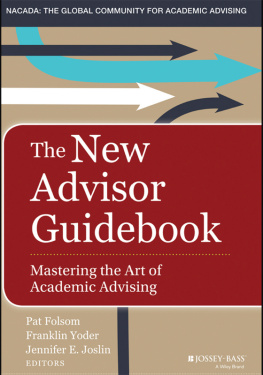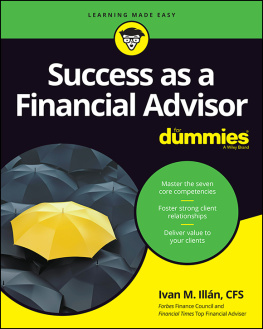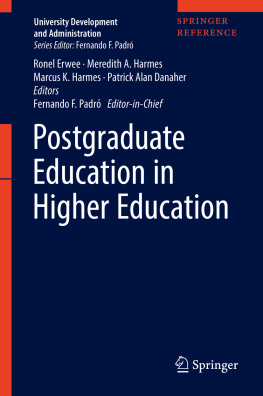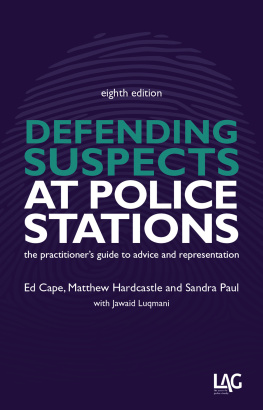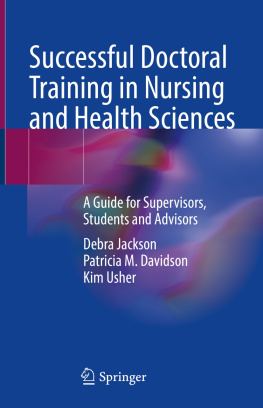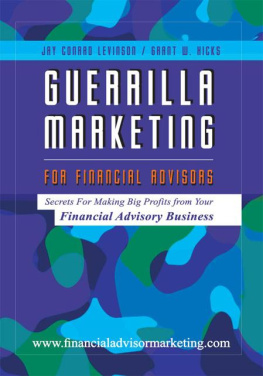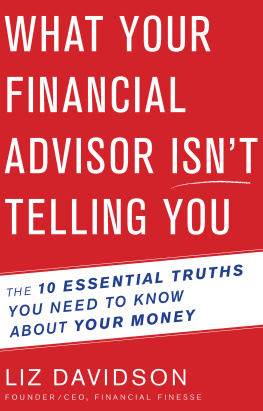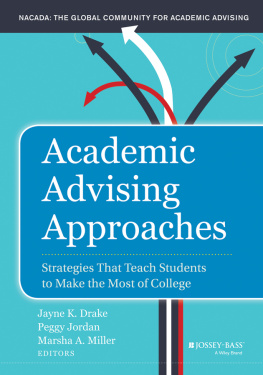
THE NEW ADVISOR GUIDEBOOK
Mastering the Art of Academic Advising
Pat Folsom, Franklin Yoder, and Jennifer E. Joslin
Cover design by Wiley
Copyright 2015 by NACADA: The Global Community for Academic Advising. All rights reserved.
Published by Jossey-Bass
A Wiley Brand
One Montgomery Street, Suite 1000, San Francisco, CA 94104-4594www.josseybass.com
No part of this publication may be reproduced, stored in a retrieval system, or transmitted in any form or by any means, electronic, mechanical, photocopying, recording, scanning, or otherwise, except as permitted under Section 107 or 108 of the 1976 United States Copyright Act, without either the prior written permission of the publisher, or authorization through payment of the appropriate per-copy fee to the Copyright Clearance Center, Inc., 222 Rosewood Drive, Danvers, MA 01923, 978-750-8400, fax 978-646-8600, or on the Web at www.copyright.com. Requests to the publisher for permission should be addressed to the Permissions Department, John Wiley & Sons, Inc., 111 River Street, Hoboken, NJ 07030, 201-748-6011, fax 201-748-6008, or online at www.wiley.com/go/permissions.
Limit of Liability/Disclaimer of Warranty: While the publisher and author have used their best efforts in preparing this book, they make no representations or warranties with respect to the accuracy or completeness of the contents of this book and specifically disclaim any implied warranties of merchantability or fitness for a particular purpose. No warranty may be created or extended by sales representatives or written sales materials. The advice and strategies contained herein may not be suitable for your situation. You should consult with a professional where appropriate. Neither the publisher nor author shall be liable for any loss of profit or any other commercial damages, including but not limited to special, incidental, consequential, or other damages. Readers should be aware that Internet Web sites offered as citations and/or sources for further information may have changed or disappeared between the time this was written and when it is read.
Jossey-Bass books and products are available through most bookstores. To contact Jossey-Bass directly call our Customer Care Department within the U.S. at 800-956-7739, outside the U.S. at 317-572-3986, or fax 317-572-4002.
Wiley publishes in a variety of print and electronic formats and by print-on-demand. Some material included with standard print versions of this book may not be included in e-books or in print-on-demand. If this book refers to media such as a CD or DVD that is not included in the version you purchased, you may download this material at http://booksupport.wiley.com. For more information about Wiley products, visit www.wiley.com.
Library of Congress Cataloging-in-Publication Data
The new advisor guidebook : mastering the art of academic advising / [edited by] Pat Folsom, Franklin Yoder, Jennifer Joslin.
1 online resource.
Includes index.
Description based on print version record and CIP data provided by publisher; resource not viewed.
ISBN 978-1-118-82358-3 (pdf) ISBN 978-1-118-82360-6 (epub) ISBN 978-1-118-82341-5 (cloth)1. Counseling in higher education.2. Faculty advisors.I. Folsom, Pat, editor.II. Yoder, Franklin L., editor.III. Joslin, Jennifer, editor.
LB2343
378.194dc23
2015019132
The Jossey-Bass Higher
and
Adult Education Series
This book is dedicated to all embarking on the journey
to master the art of academic advising.
Preface
This is an exciting time to become an academic advisora time in which global recognition of the importance of advising is growing, and research affirms the critical role advising plays in student success (Klepfer & Hull, 2012). This positive attention to the field also means that advisors, regardless of their specific responsibilities, face the intense challenge to deliver quality services responsive to the specific contexts of the institution and the changing needs of students (Wallace, 2013, 3). This second edition of The New Advisor Guidebook is specifically designed to help first-time advisors meet this challenge. As the first of three books in the newly developed academic advisor core resource library, it also prepares advisors to meet the students' advising needs over time and within a continuously changing higher education environment.
Changing Emphases in Higher Education
State, provincial, federal, and national parliamentary bodies are compelling postsecondary institutions to focus on degree completion, financial affordability, career attainment, the worth and efficacy of higher education, and the burden borne by citizens, students, parents, and governments. The resulting focus on college completion has increased the scrutiny of policies extant before the global financial crisis in the late 2000s and inspired new policies; for example, performance-based funding has replaced enrollment-based funding. This reprioritization is associated with increased involvement of government entities and higher education foundations.
Agents of change are paying attention to graduation rates and progression, career and work readiness, appropriate major choices, and careers in science, technology, engineering, and math as well as service-oriented business environments. The Georgetown Center on Education and the Workforce, The Lumina Foundation, and other nonprofit organizations stress that college-bound students should consider financial aid responsibilities, graduation and progression rates, and majors that lead to the best job postgraduation (e.g., Carnevale, 2013; Carnevale, Smith, & Strohl, 2010). In the United States, President Obama has called for greater institutional transparency such that students and their parents can access information helpful for makingoptimal choices for the postsecondary experience.
As the burden for higher education has shifted from taxpayers to students and parents in the United States, the United Kingdom, and elsewhere, institutions have redoubled efforts on effective academic advising, personal tutoring, and other student support services (Field, 2015; Organisation for Economic Co-operation and Development, 2012; Thomas, 2012). Advising administrators as well as practitioners have responded to the new demands by highlighting the importance of adequate staffing, state-of-the-art technology tools, assessment, and training and ongoing professional development for long-term effective advising.
Current State of Advisor Training and Development
The increased attention on the importance of effective academic advising leads to greater recognition of the importance of and need for advisor training and ongoing professional growth and development. To deliver advising that enhances students' educational experiences, aids in fulfilling institutional missions and goals, and meets the changing emphases in higher education, advisors must participate in opportunities for professional growth.
The first edition of this Guidebook (Folsom, 2007) offered a vision for a comprehensive approach to advisor training and development, calling for programs that include year-long new-advisor development programs (Folsom, 2007, p. 8) and that provide ongoing training support to ensure that newcomers to the field fully develop as advisors (p. 8). More recently, Julie Givans Voller (2011) explicitly outlined the requisite components of a comprehensive approach to advisor training and development:
Next page
